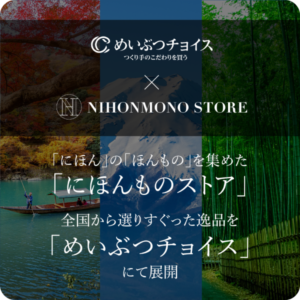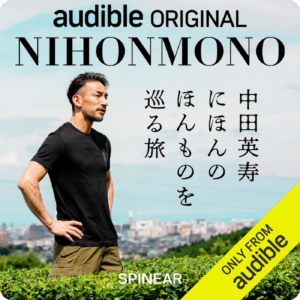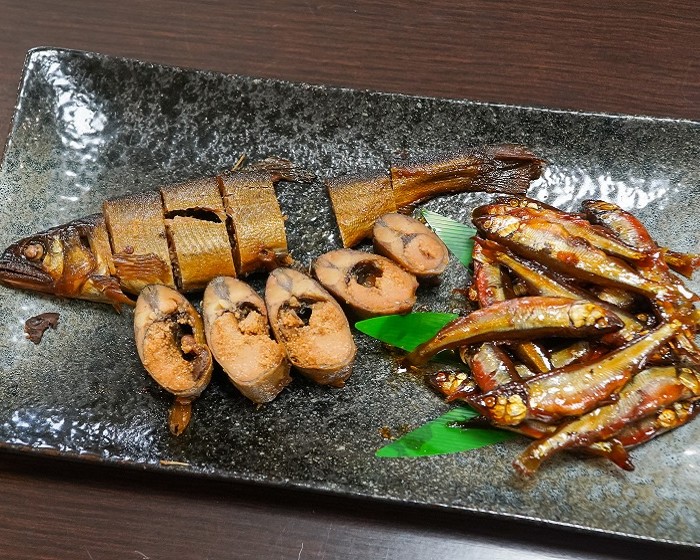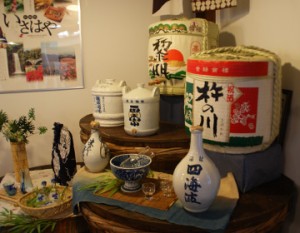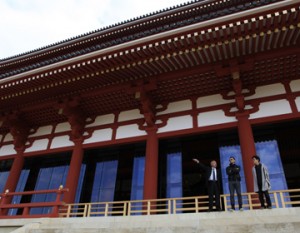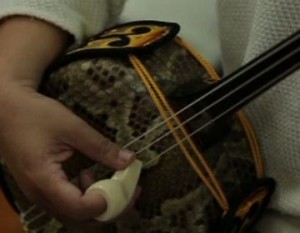Lake Biwa is the largest lake in Japan. The people of Shiga Prefecture, where Lake Biwa is located, have a unique food culture that has been passed down through the generations by people who have lived alongside the water. Just as the mountain trout and char caught in the rivers are called “river fish”, the fish caught in Lake Biwa are called “lake fish” in Shiga Prefecture. The most representative of these lake fish is the ayu, which boasts the largest catch of any lake fish. What’s more, it is said that this is a special ayu that can only be caught here.
A special “koayu” that lives only in Lake Biwa, a treasure of Shiga Prefecture
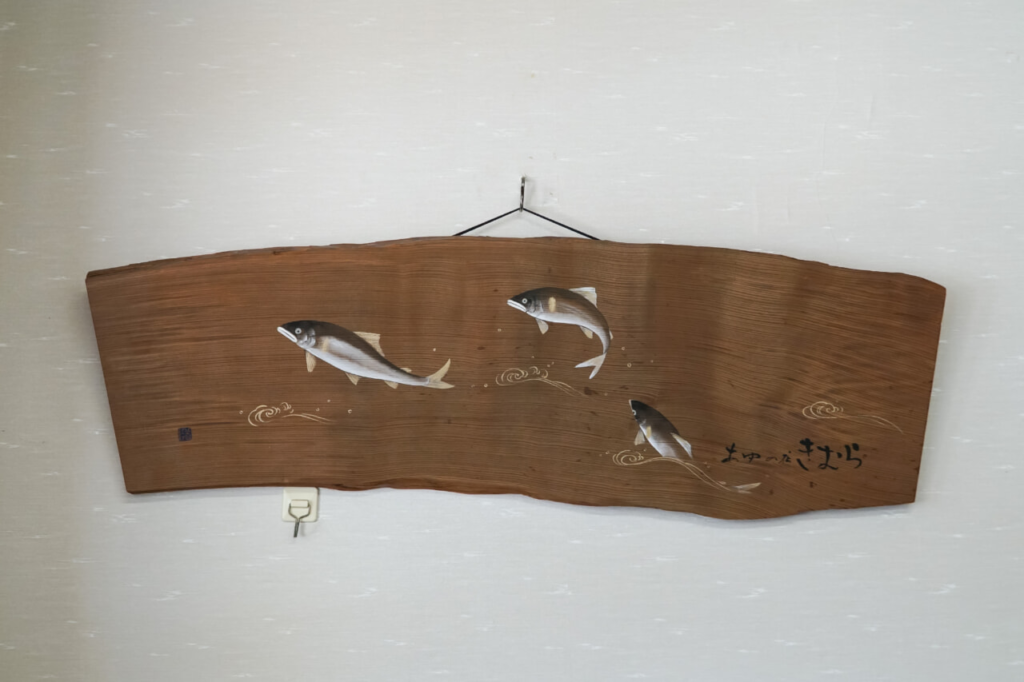
Ayu (sweetfish) is a freshwater fish that has been loved in Japan since ancient times. Its refreshing aroma, delicate flavor and slightly bitter taste are loved by the Japanese, and even the famous gourmet Kitaoji Rosanjin said that the best way to eat ayu is “to grill it without removing the entrails, and then to dip it in a mixture of salt and watercress vinegar that is so hot it will burn you. The freshly caught ayu has a scent similar to that of watermelon or cucumber in early summer, so it is called “the scented fish”, and it is also called “the queen of clear streams” because it likes clear, clean streams.
In Japan, ayu are generally born in rivers, grow up in the sea, and then return to the rivers, but the ayu of Lake Biwa are a little different. They are called “koayu” (small ayu), and are unique to Lake Biwa. After being born in rivers, they go down to Lake Biwa and live there. While ayu generally grow to around 20 cm, the largest koayu adults are only about 10 cm. They stop growing at around the same size as young ayu. You would think that they would grow bigger as they live in the vast Lake Biwa, but the fact that they don’t is due to the environment of Lake Biwa, where there is a lack of algae that ayu feed on. The ayu of Lake Biwa are the only ayu in the world that live in this special habitat.
Strong, delicate flavor
The ayu season is from May to early August. During this time, local supermarkets will be selling ayu from Lake Biwa, and the aroma of soy sauce cooking tsukudani will be wafting through the air around the lake. The way ayu is cooked varies from region to region, household to household, and even from processor to processor, and it has been passed down as a food culture that is deeply rooted in the local area and unique to Shiga Prefecture.
Ayu is characterized by its fine, smooth scales and soft skin and bones, which means that it can be eaten whole. Although they are about the same size as young ayu, they are fully grown fish, so they have a stronger flavor than young ayu, but without any strong taste. They also have a slightly bitter taste that is unique to ayu, and they are widely loved by people of all ages in Shiga Prefecture, from children to adults, as a kind of soul food, in dishes such as the local dish of Shiga Prefecture, tsukudani, as well as tempura, marinated dishes, and nanban-zuke.
Could the ayu from all over the country have their roots in Lake Biwa?
The small ayu from Lake Biwa were thought to be different from the ayu from rivers because they did not grow large even when they grew up. However, when they were released into the Tama River in Tokyo in 1913, it was discovered that they grew large in the same way as ayu from rivers. Since then, ayu from Lake Biwa have been shipped all over the country for release into rivers and for aquaculture. There may be quite a few ayu seen in rivers all over the country that have their roots in Lake Biwa.
There is a saying that symbolizes the Omi Merchants who were active based in Shiga Prefecture: “Ayu from Lake Biwa grow bigger when they go out into the world.” This is said to mean that just as ayu grow bigger in rivers after being released into rivers all over the country after leaving Lake Biwa, people from Shiga also grow by going out into the world.
Ayu no mise Kimura” sells lake fish dishes that are particular about the ingredients.
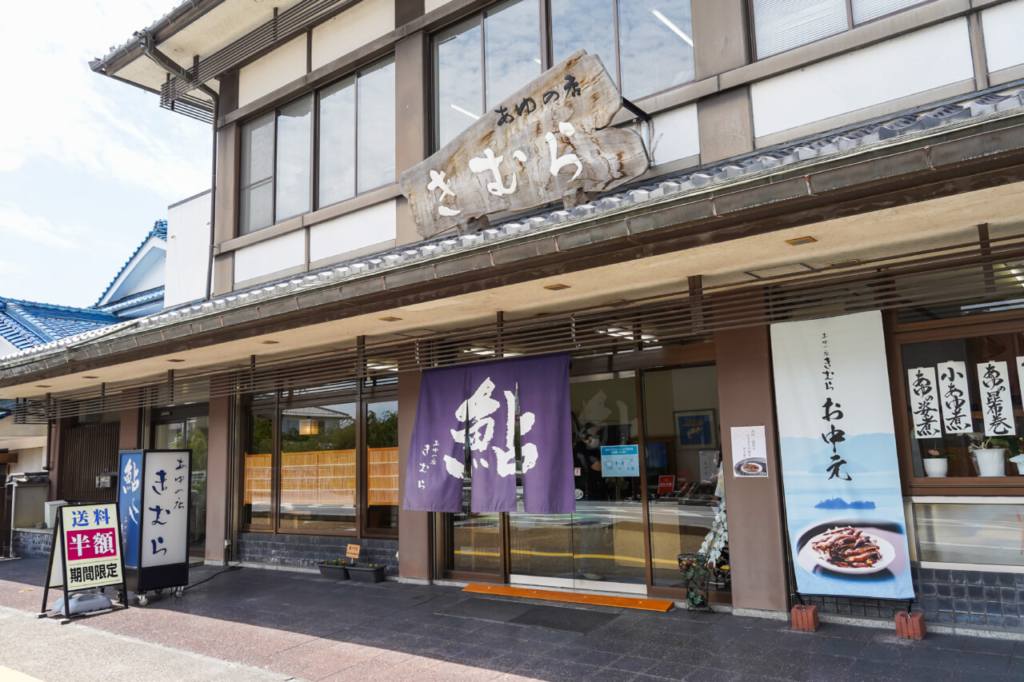
There is a shop in Hikone City, Shiga Prefecture, that processes and sells ayu from Lake Biwa in a variety of foods. “Ayu no mise Kimura” is a specialty shop for ayu that was established in 1970. In 1953, before the shop was established, it pioneered ayu farming nationwide, and it continues to pursue the production of high-quality ayu that is not inferior to natural ayu.
The company produces and sells lake fish dishes made with fresh ingredients, such as the “jewel of Lake Biwa” Biwa trout and funazushi (fermented crucian carp), a specialty of Shiga Prefecture, as well as ayu fish raised in their own aquaculture and small ayu caught in Lake Biwa.
Aquaculture methods that bring out the full flavor of ayu
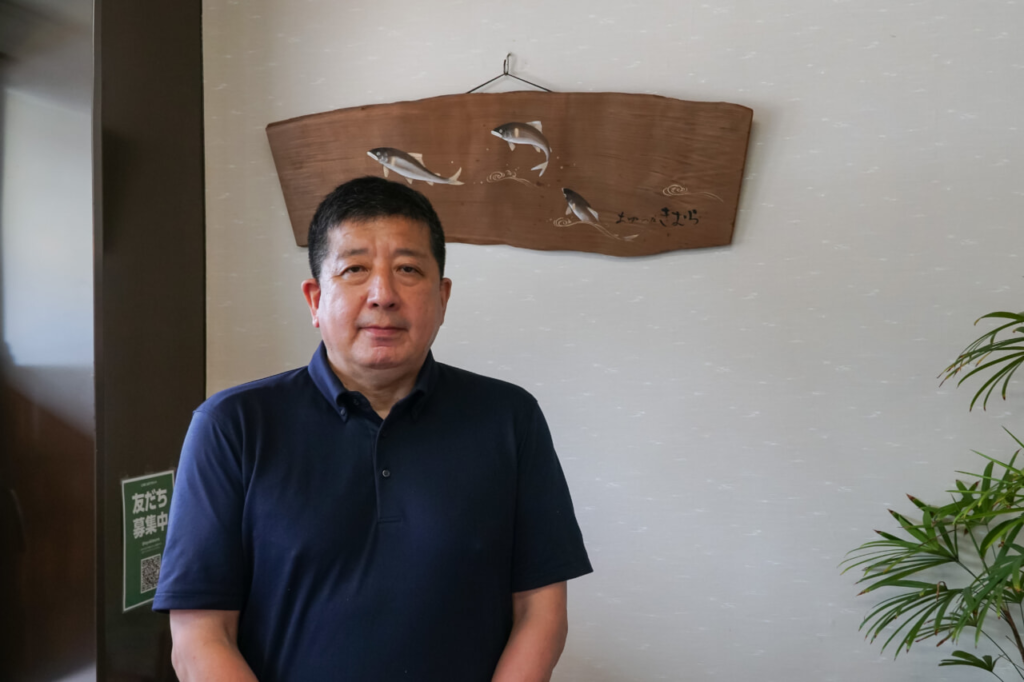
“Sometimes even the locals are surprised to learn that there is a large fish farm in the middle of the city. There are about 40 ponds at the fish farm, and there are currently about 15 tons of small ayu in total, but we will raise them to a larger size and eventually they will reach 20 to 30 tons,” says Mr. Masahiro Kimura, the fourth generation of the company. Indeed, it is quite an unusual sight to see such a large fish farm behind a store in the middle of a city with shops and houses lining the streets. Perhaps this is a sight that can only be seen here.
Ayu are cultivated using mineral-rich spring water pumped up from 300 meters underground, and are raised slowly over a period of 5 to 6 months in relatively cool water. Also, because ayu are sensitive to changes in their environment and easily stressed, in order to raise them in an environment as close to nature as possible, a waterwheel is used to recreate the fast-flowing water of a river upstream. By making them swim vigorously, they are said to develop a firm, elegant, and light taste. In order to create a place where ayu can play, the pond is made into an octagonal shape. “Ayu die quickly when there is not enough oxygen, so we circulate the water to ensure that there is plenty of oxygen in the water, and we raise them in an environment as close to nature as possible,” says Mr. Kimura. This is the kind of thorough attention to detail that you would expect from a long-established company that started out as a fish farm.
Caring for the resources of Lake Biwa
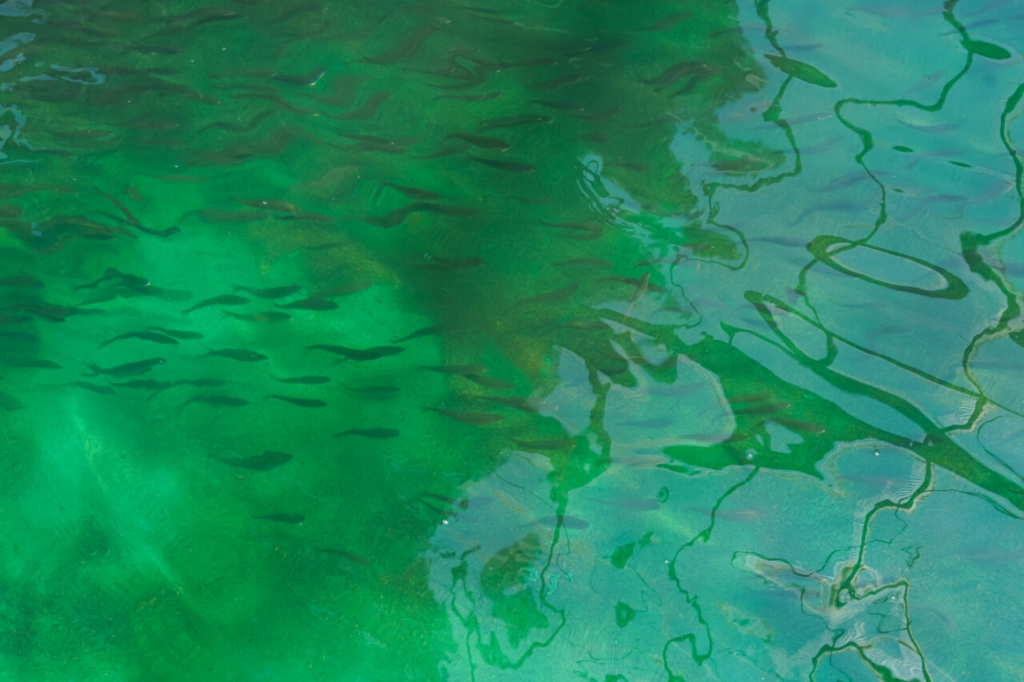
In general, wild ayu eat algae that grows naturally on the riverbed, so they have a rich aroma, while farmed ayu are said to contain a lot of fat. However, the ayu farmed at this company are very aromatic and have a firm texture. “To raise good ayu, the feed and water are important. We feed them our original feed, which is made from fishmeal with little fishy smell, and also includes algae and propolis. The ayu we raise have a flavor that rivals that of wild fish, and they are very popular with customers at restaurants all over the country. We even ship them alive to Toyosu in Tokyo,” says Mr. Kimura.
For the aquaculture, they always use natural fry caught in Lake Biwa. In other prefectures, there are producers who farm artificially hatched ayu, but in Shiga Prefecture, it is customary to farm ayu by bringing in live fry from Lake Biwa. For this reason, they do not artificially hatch eggs. This is truly a job that makes the most of the wonderful resources that can be found here.
Incidentally, this benefit also affects the taste itself. It is said that ayu from Lake Biwa have finer, smoother scales, softer bones and skin, and a better texture than artificially hatched ayu. The natural ayu are carefully raised in a safer environment. It is this commitment to quality that has made Mr. Kimura’s ayu so popular.
Enjoy the natural bounty that can only be found here with “small ayu simmered in soy sauce
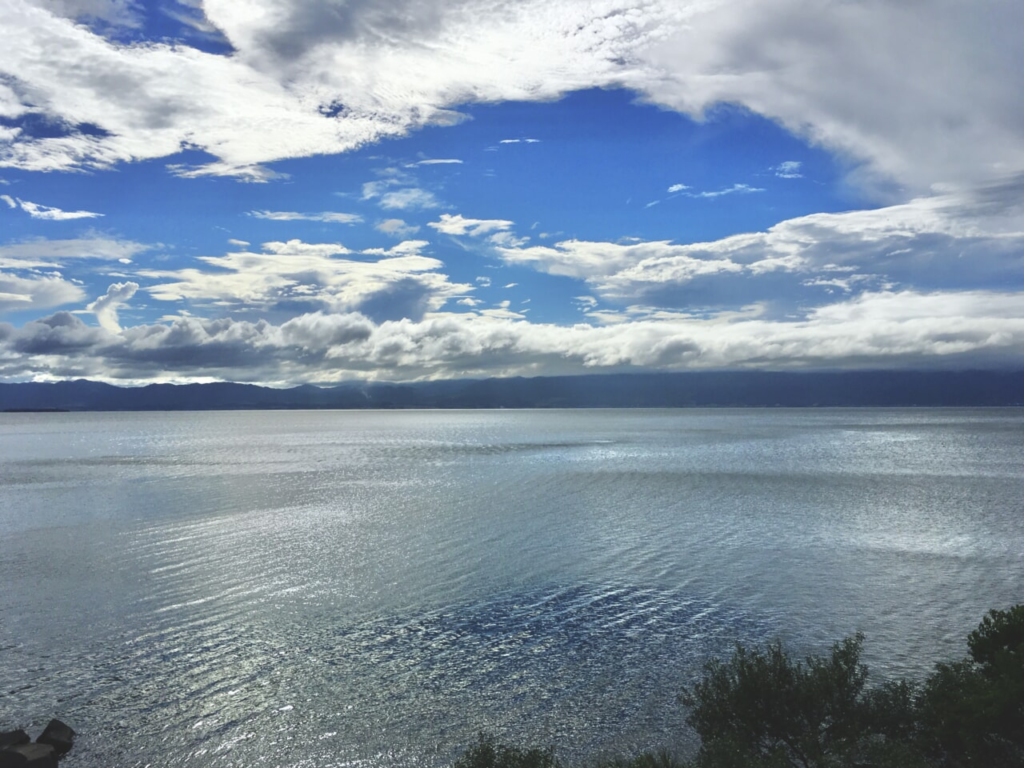
Ayu no mise Kimura’s “small ayu simmered in soy sauce” is a dish made by expert chefs who spend several hours simmering small ayu caught from Lake Biwa in the morning in small kettles, so that they remain fresh. As they are cooked in small batches with care, they do not fall apart, and they are finished with a sweet and mild flavor using locally produced soy sauce and sake.
Ayu fish tsukudani is a traditional local dish from Shiga Prefecture. The ayu fish, which has no strong flavor but is very tasty, is cooked until it is tender, even down to the bones, so it can be enjoyed as a side dish with rice or as a snack. It is a popular signature product, not only with regular local customers but also with tourists as a souvenir.
Ayu fish grilled with salt” lets you enjoy the rich aroma in its entirety.
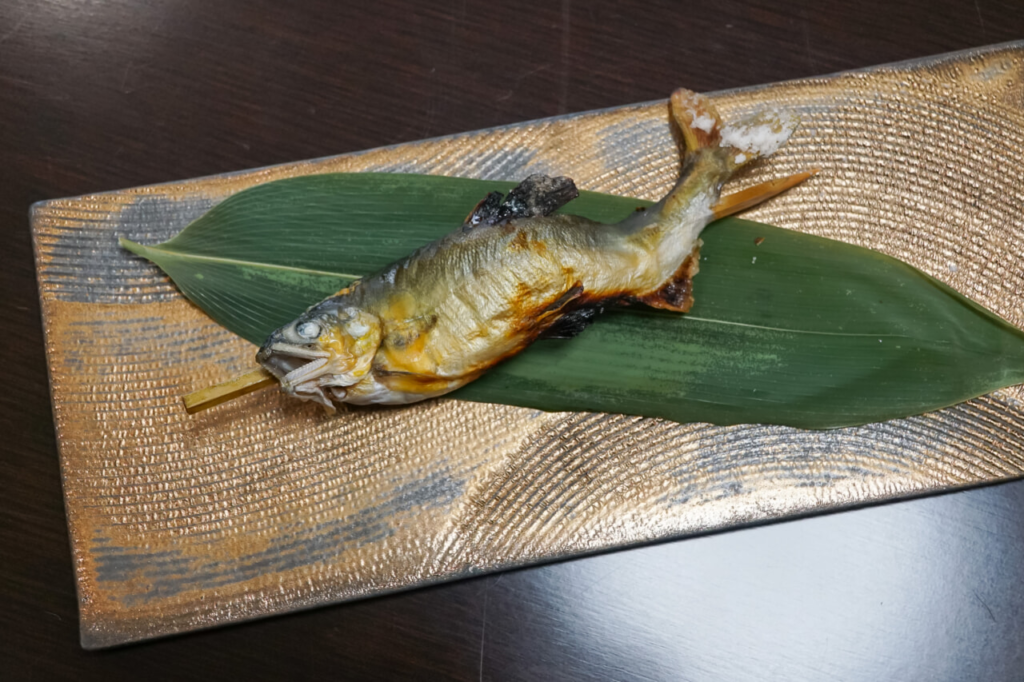
Kimura-san recommends “grilled ayu with salt” as “the best way to eat it”. Among lake fish, people like to eat biwa trout and carp sashimi, but many people say that grilled ayu is the best way to eat it.
At Ayu no mise Kimura, they quickly chill the ayu they have just taken out of the tank with ice, and then grill it on a skewer while it is still fresh. By slowly roasting the fish with the mouth facing down, the excess fat is said to remain inside the ayu, and the fish is finished with a delicious aroma right down to the core. In addition to being able to enjoy the aroma and flavor of the ayu itself, the skin is crisp and fragrant, and the flesh is light and fluffy and soft. This is a dish that we also recommend to those who don’t like river fish.
We want to convey the appeal of ayu caught in Lake Biwa.
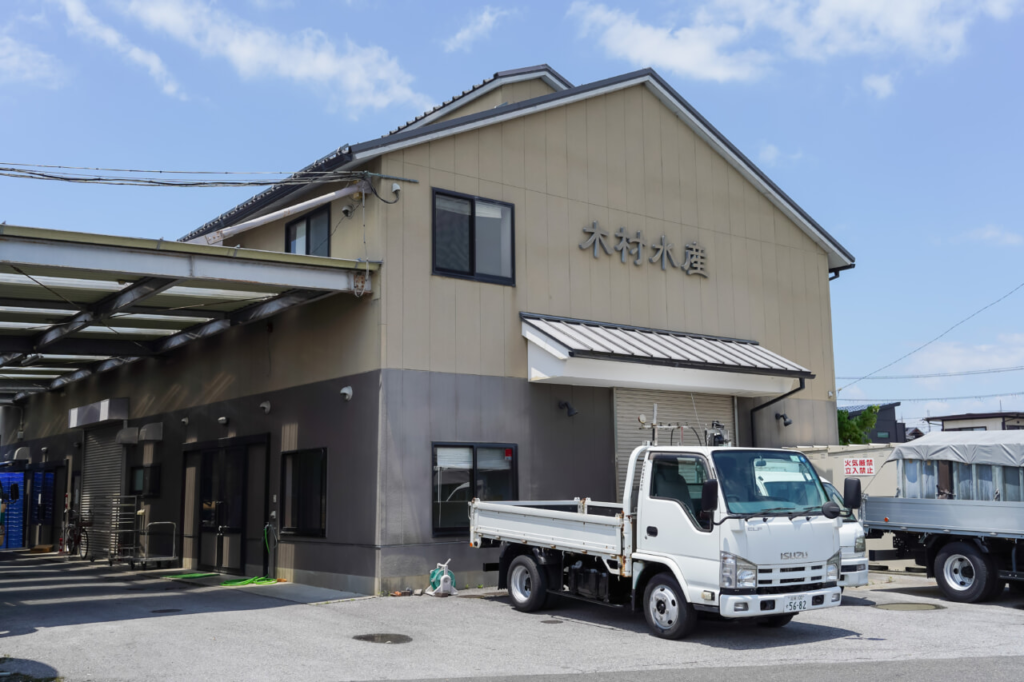
In recent years, small ayu have become particularly popular. “In the past, it was normal to send ayu that had been grown in fish farms and then packed in ice to the market, but recently, people have come to prefer the smaller ayu. Compared to the larger ayu, the bitterness of the liver is weaker and it is softer, so you can eat the whole fish, including the bones, and still enjoy the distinctive ayu flavor. The characteristics of the smaller ayu go well with tempura and fried dishes, and there is an increasing number of inquiries from restaurants in the Tokyo area and elsewhere about this easy-to-enjoy summer delicacy,” says Mr. Kimura.
While the ayu that grow to a large size reach their peak season, the ayu from Lake Biwa have a special value in that you can enjoy their seasonal flavor while they are still small. “I want to continue to propose new ways of eating and cooking while also preserving the traditional food culture”. Mr. Kimura’s thoughts like this will open up new possibilities for the ayu from Lake Biwa and give them the power to swim further afield.
